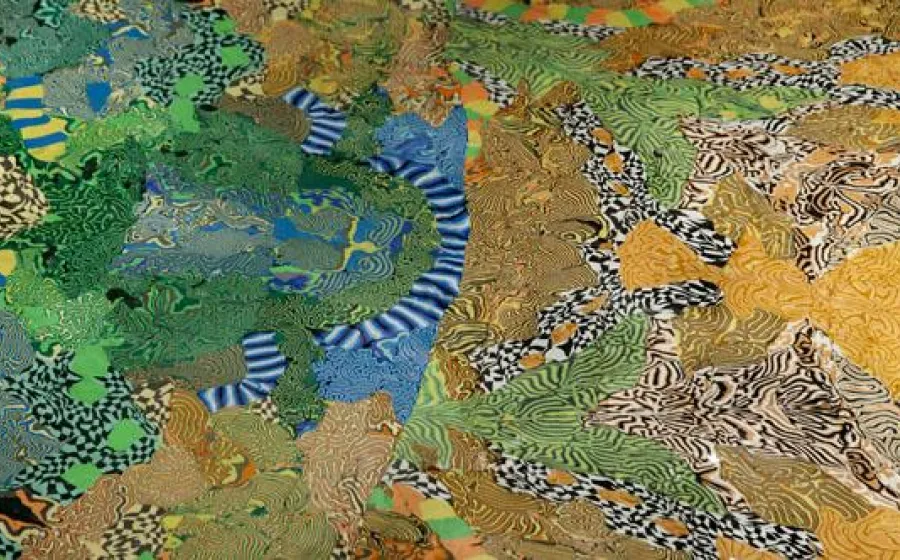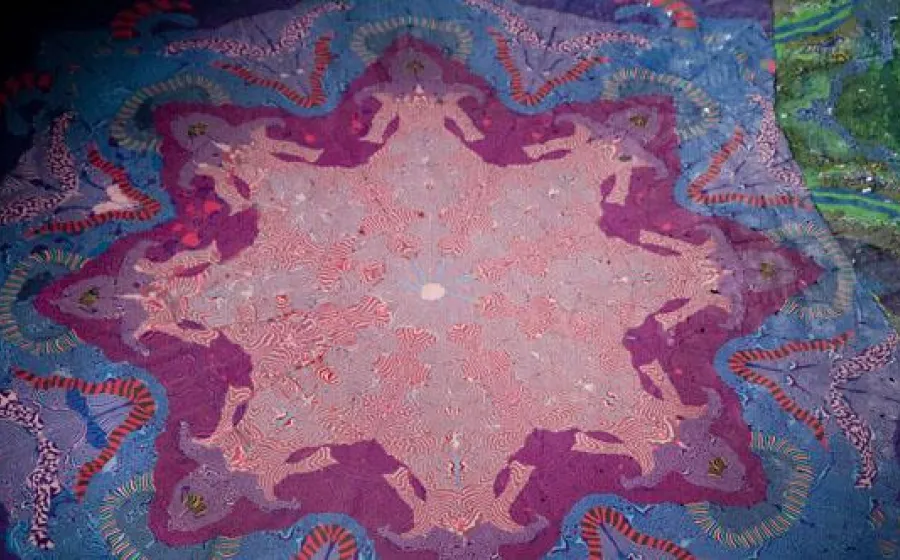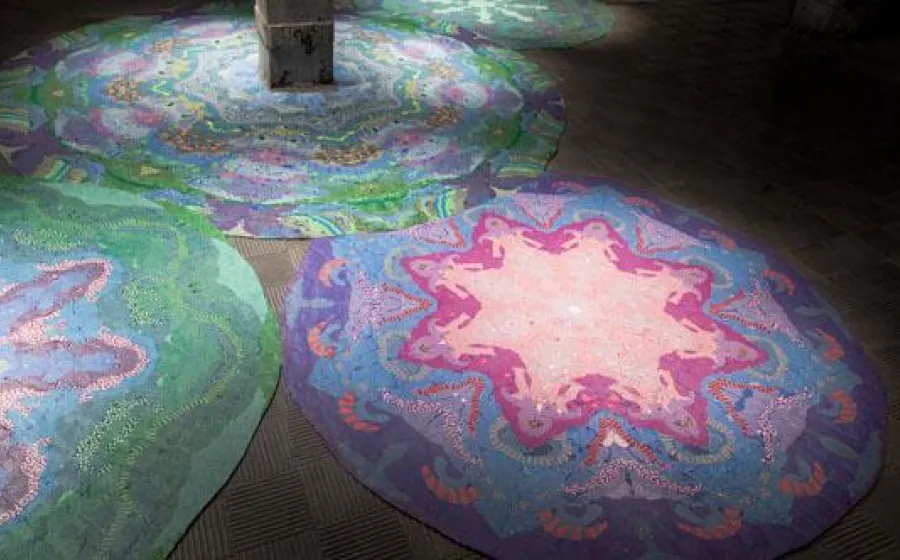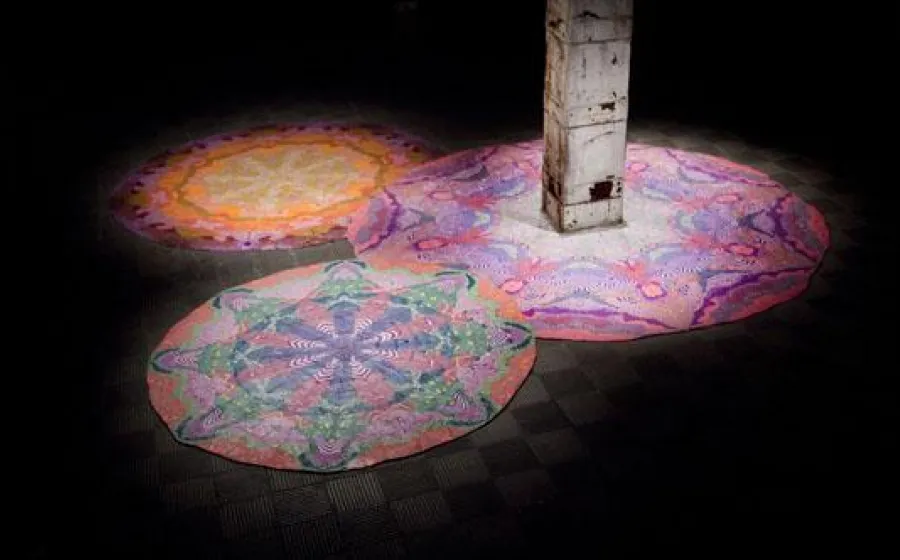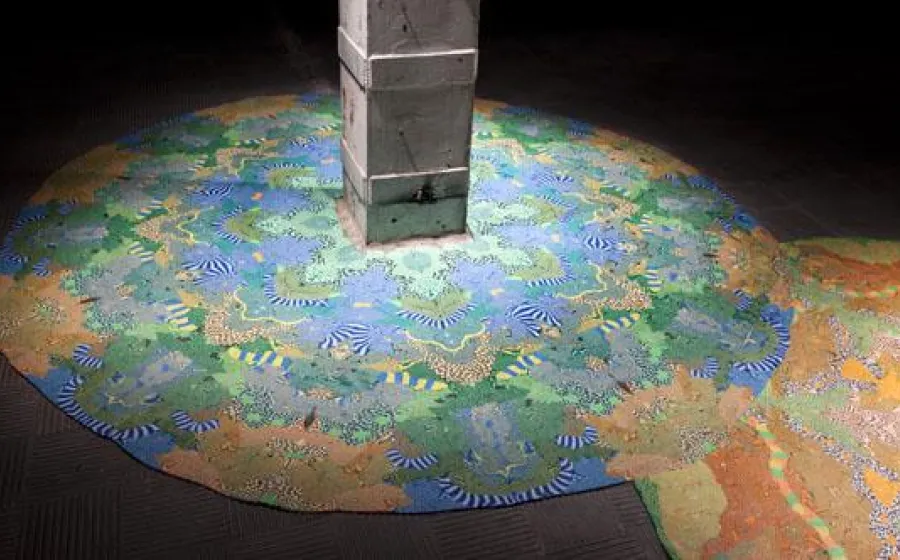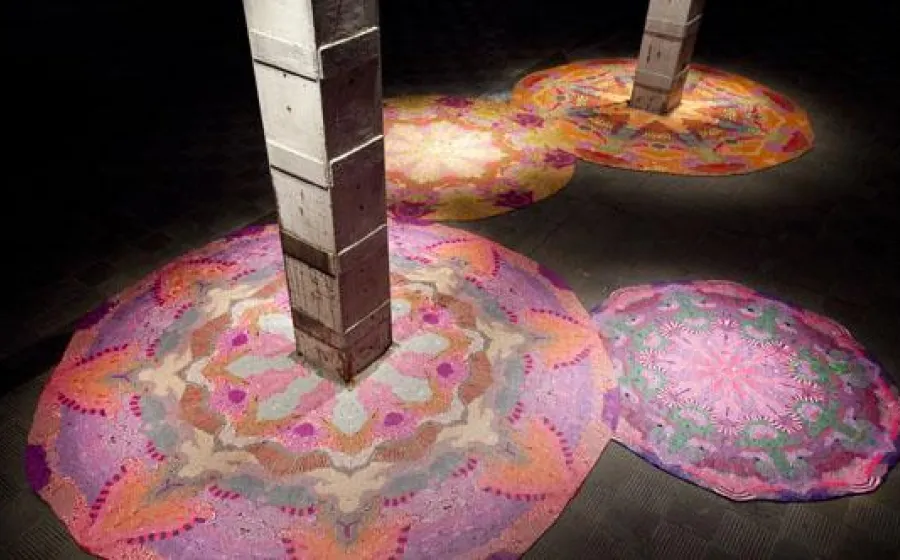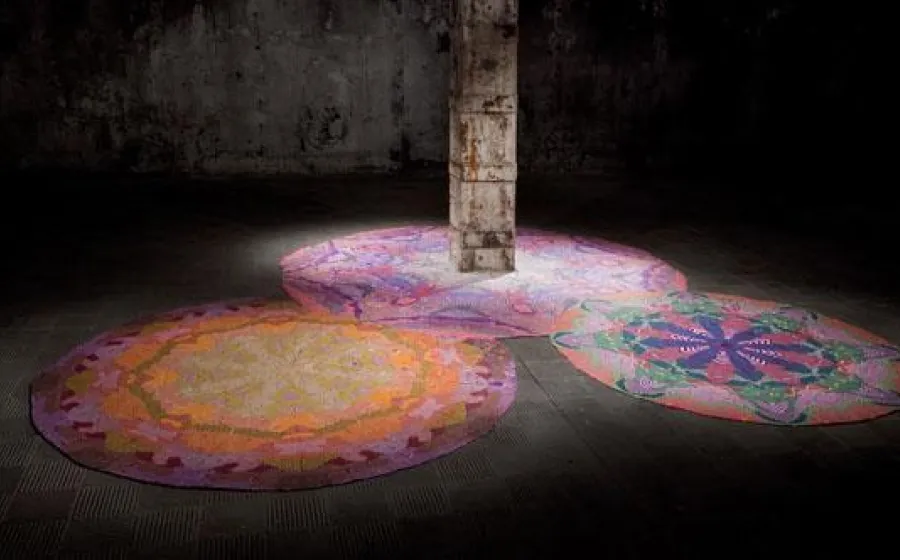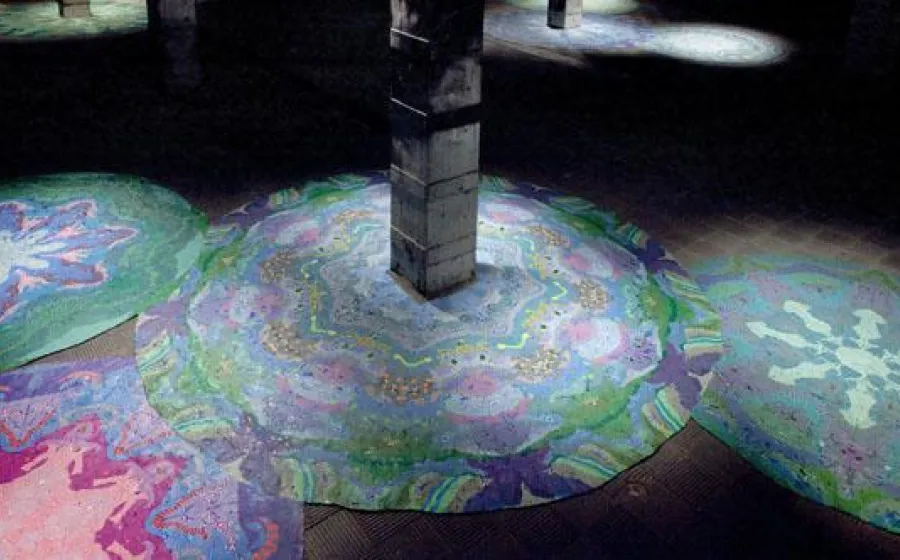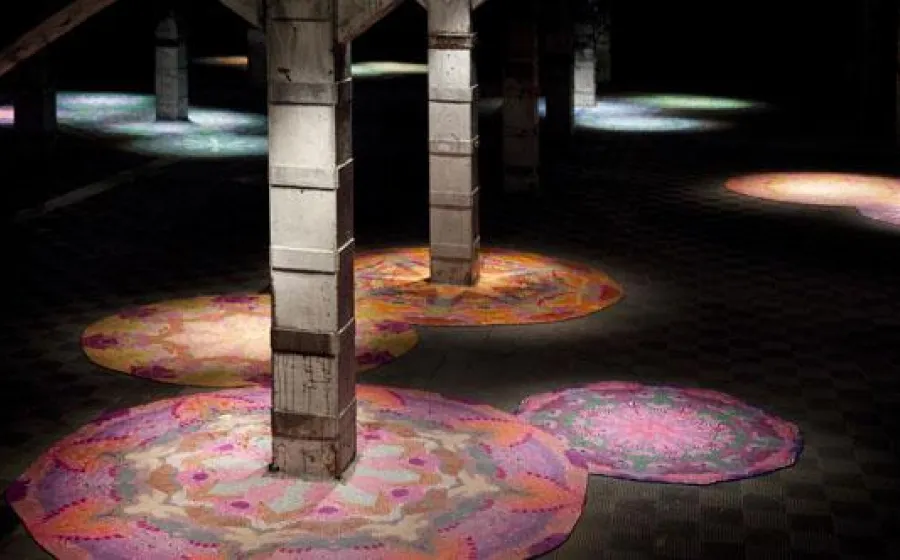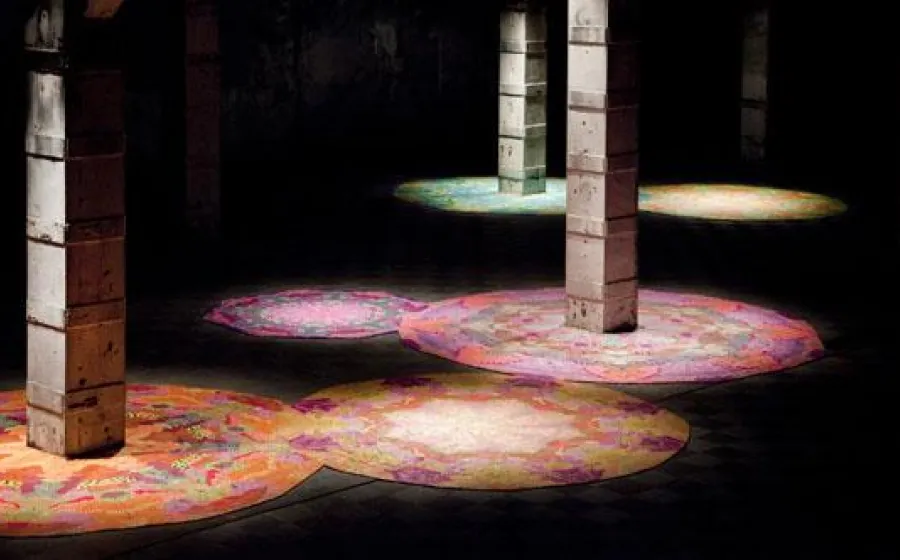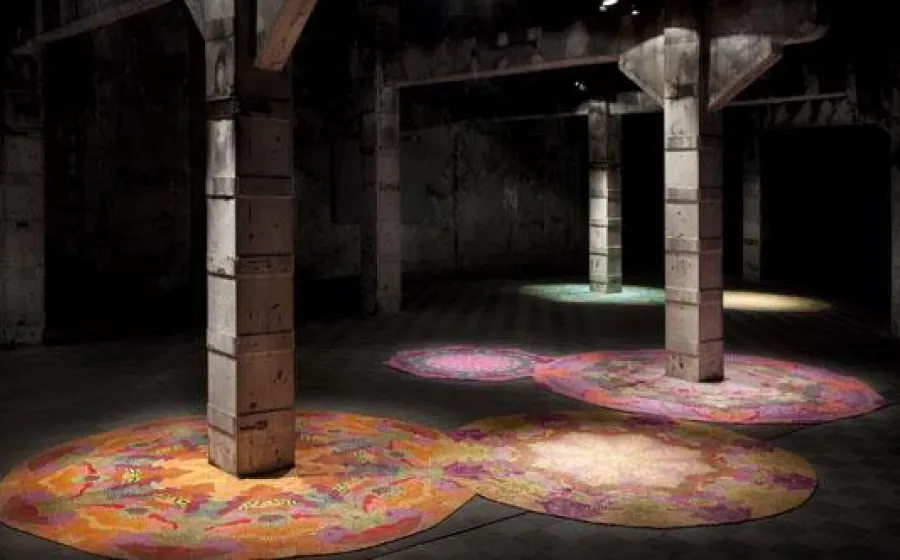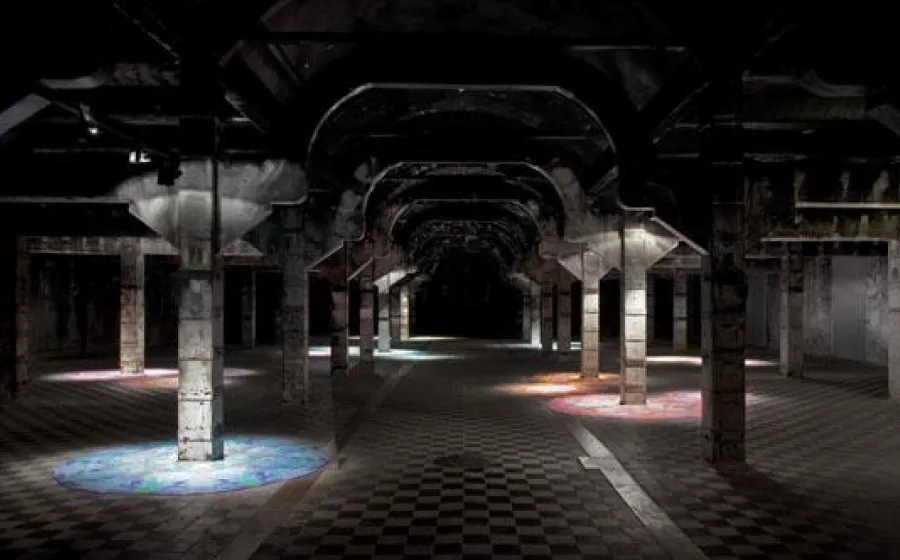MAGDALENA ATRIA, CENOTES
Geometries of plasticine
1/12
Date
12 September 2013
5 January 2014
Venue
Nave 0
Institution
Naves Matadero
Cenote is a term used in Mexico that comes from the Mayan Word dzonot, meaning abyss. The cenotes are freshwater wells created by the erosion of soft and porous limestone, which in the Mayan world were life sources that provided vital drinking water, as well as being a gateway to the wonders of another world and a communication centre for making contact with the Gods.
The cenotes originated in caves that had collapsed, and many times they were connected underground by extensive tunnel and cavity systems that went deep into the depths of the Earth. Both from a geological point of view as much as from a mythical one they are thresholds that connect two planes of reality: the everyday world that opens wide up to the sky, bathed in sunlight and inhabited by life-forms, with which we are familiar; and another world, hidden beneath the surface, dark and mysterious, populated by unknown phenomena and creatures, and also by fantasy and myths associated with the supernatural and the wondrous.
Since ancient times and across the continents, the subterranean world of caves has been part of the human being’s life, not only in accordance with practical issues, such as serving as shelter or a home, but also as a background for rituals and communication with the supernatural, with the underworld. They have also provided a fertile ground for the imagination, which has given rise to the most varied of legends and fantastical adventure stories that penetrate deep into this dark world, discovering places and beings that astonish us in their complexity and sophistication.
The installation in Abierto x Obras attempts to transform the room into a fantastical space, in which the vertical axes of the columns suggest Cenotes, and which instead of being full of water will be full of intricate geometries of bright colours that arise from the surrounding darkness, so as to break open the boundaries that connect us to the realms of fantasy, imagination, and mystery. The material used for the construction of the cenotes will be –plasticine- both humble and wondrous at the same time: a child’s material, normally used in simple craft activities in schools, that has the unique and extraordinary property of remaining soft and malleable, subject to the effects of touch and temperature change. It is also a material that embodies colour in a way that is not only visual, but also physical: it is at the same time an image and a body that will inhabit the gloominess of the cold store so as to question it in its new guise.
Magdalena Atria
Visual artist, born in Santiago Chile, where she currently lives and works.
Graduated in Fine Art from the la Universidad Católica de Chile and completed her training at Parsons School of Design, New York, thanks to a Fulbright scholarship. Her work has been exhibited in important museums, arts centres and galleries in Chile, the USA, Mexico, Brazil, Argentina, Ecuador, England, France and South Korea. Through the variety of media used in her work she addresses the relationships between the ideal and the contingent, and the way which the existential and the banal come together in the popular imagination.
The cenotes originated in caves that had collapsed, and many times they were connected underground by extensive tunnel and cavity systems that went deep into the depths of the Earth. Both from a geological point of view as much as from a mythical one they are thresholds that connect two planes of reality: the everyday world that opens wide up to the sky, bathed in sunlight and inhabited by life-forms, with which we are familiar; and another world, hidden beneath the surface, dark and mysterious, populated by unknown phenomena and creatures, and also by fantasy and myths associated with the supernatural and the wondrous.
Since ancient times and across the continents, the subterranean world of caves has been part of the human being’s life, not only in accordance with practical issues, such as serving as shelter or a home, but also as a background for rituals and communication with the supernatural, with the underworld. They have also provided a fertile ground for the imagination, which has given rise to the most varied of legends and fantastical adventure stories that penetrate deep into this dark world, discovering places and beings that astonish us in their complexity and sophistication.
The installation in Abierto x Obras attempts to transform the room into a fantastical space, in which the vertical axes of the columns suggest Cenotes, and which instead of being full of water will be full of intricate geometries of bright colours that arise from the surrounding darkness, so as to break open the boundaries that connect us to the realms of fantasy, imagination, and mystery. The material used for the construction of the cenotes will be –plasticine- both humble and wondrous at the same time: a child’s material, normally used in simple craft activities in schools, that has the unique and extraordinary property of remaining soft and malleable, subject to the effects of touch and temperature change. It is also a material that embodies colour in a way that is not only visual, but also physical: it is at the same time an image and a body that will inhabit the gloominess of the cold store so as to question it in its new guise.
Magdalena Atria
Visual artist, born in Santiago Chile, where she currently lives and works.
Graduated in Fine Art from the la Universidad Católica de Chile and completed her training at Parsons School of Design, New York, thanks to a Fulbright scholarship. Her work has been exhibited in important museums, arts centres and galleries in Chile, the USA, Mexico, Brazil, Argentina, Ecuador, England, France and South Korea. Through the variety of media used in her work she addresses the relationships between the ideal and the contingent, and the way which the existential and the banal come together in the popular imagination.

